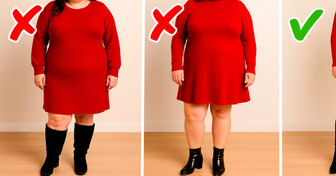Kristin Davis, 59, Dissolved Fillers in Her Face, Leaving People in Awe

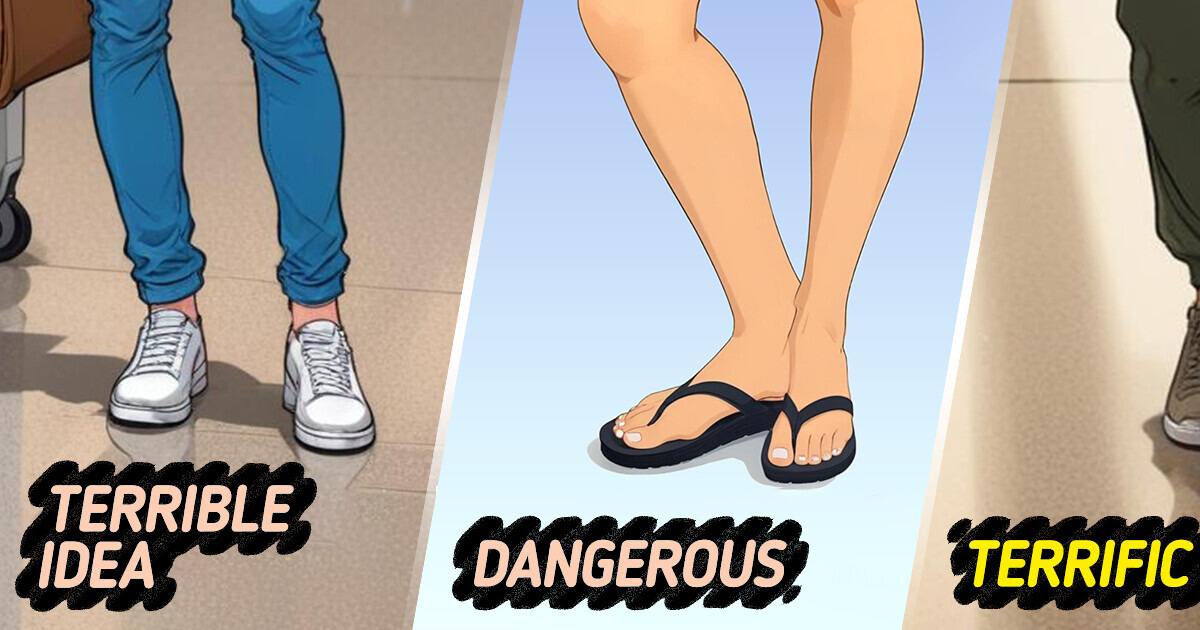
When preparing for a trip, we usually opt for clothes that promise comfort, knowing we’ll be sitting for long hours in a tight space. However, certain pieces of clothing that appear to be a good choice can actually make a flight, bus, or train ride far more uncomfortable than expected. These seemingly practical outfits can quickly turn your journey into an unpleasant experience.
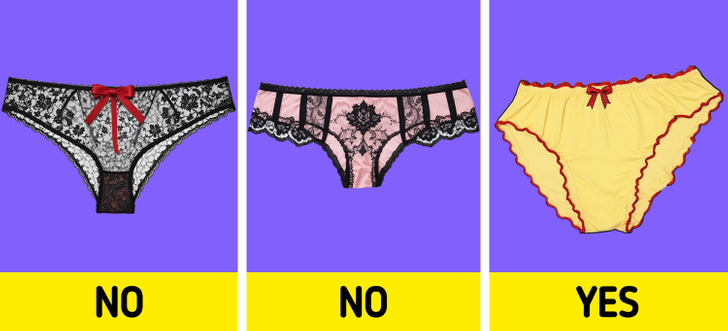
Elegant panties made from synthetic materials or lace may look great, but they’re not the best option for travel. These fabrics restrict airflow, causing your body to sweat more easily. Sitting for hours in damp underwear can not only be uncomfortable, but it may also lead to skin irritation and even infections in some cases. For a more comfortable journey, it’s wise to choose underwear made of cotton or other breathable fabrics that promote air circulation, and save your lace lingerie for when you reach your destination.
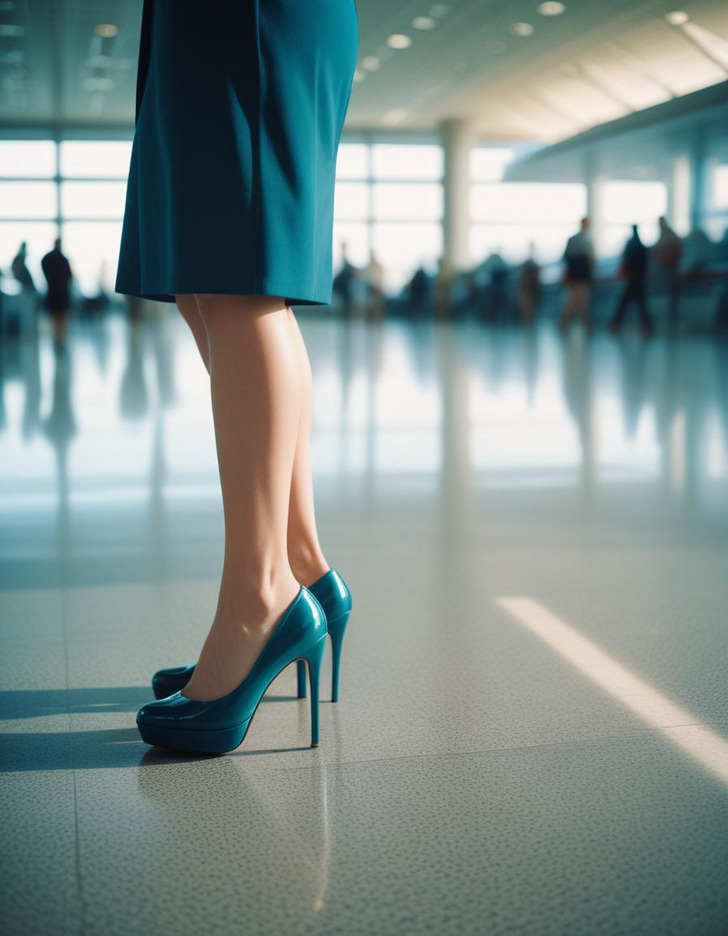
While fashionable, high heels are a traveler’s nemesis. They’re impractical for walking long distances, especially on cobblestone streets or uneven surfaces common in many travel destinations. They can lead to foot pain, blisters, and even injuries, potentially derailing your travel plans. Moreover, they’re cumbersome to pack and limit your ability to spontaneously explore or join in activities. Opt for comfortable, supportive flats or low-heeled shoes that can take you from day to night without compromising your comfort or mobility.
A tight, boned bra can lead to a lot of discomfort during travel. If the bra digs into your skin, it can cause irritation and even scratches after a few hours. Sitting for extended periods in such restrictive underwear can become quite unbearable.
Moreover, bras with metal boning can also slow you down at airport security, as the metal may trigger alarms. To avoid this hassle, it’s better to opt for a sports bra or a bralette made from breathable, quick-drying fabric, offering both comfort and convenience for your trip.
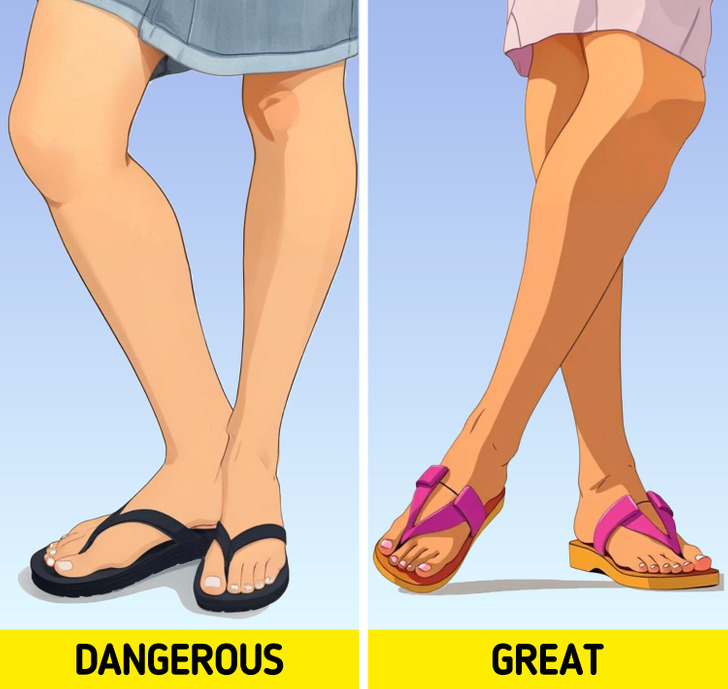
Flip-flops may seem like a convenient choice for traveling by train, bus, or even on long flights, but this is a common misconception.
Firstly, if you need to rush off the cabin quickly—say, because you overslept your stop—flip-flops can easily fall off while running. Secondly, their typically slippery soles increase the risk of slipping and getting injured. And lastly, using a public restroom in flip-flops is far from sanitary. A better option is to wear comfortable, lightweight sandals that offer proper support and keep your feet secure throughout your journey.

Flaunting valuable jewelry while traveling is akin to wearing a “rob me” sign. Not only does it make you a target for theft, but it can also lead to unwanted attention or create a false impression of wealth. There’s also the risk of losing precious items in unfamiliar places. Instead, consider wearing simple, less valuable accessories that complement your outfits without drawing unnecessary attention. If you must bring valuable jewelry for a special occasion, keep it secured in your hotel safe when not in use.

Wearing clothing that’s too tight, like skinny jeans or snug leggings, can turn traveling into a real nightmare. These garments limit your movement, making it hard to sit comfortably for extended periods. On a plane, tight jeans can cause even bigger issues. At high altitudes, our bodies often swell, and restrictive pants can hinder proper blood circulation.
For a more comfortable trip, it’s best to opt for loose-fitting pants made from breathable fabrics. Linen is a great choice—it’s lightweight, promotes airflow, and effectively absorbs moisture, keeping you comfortable throughout your journey.
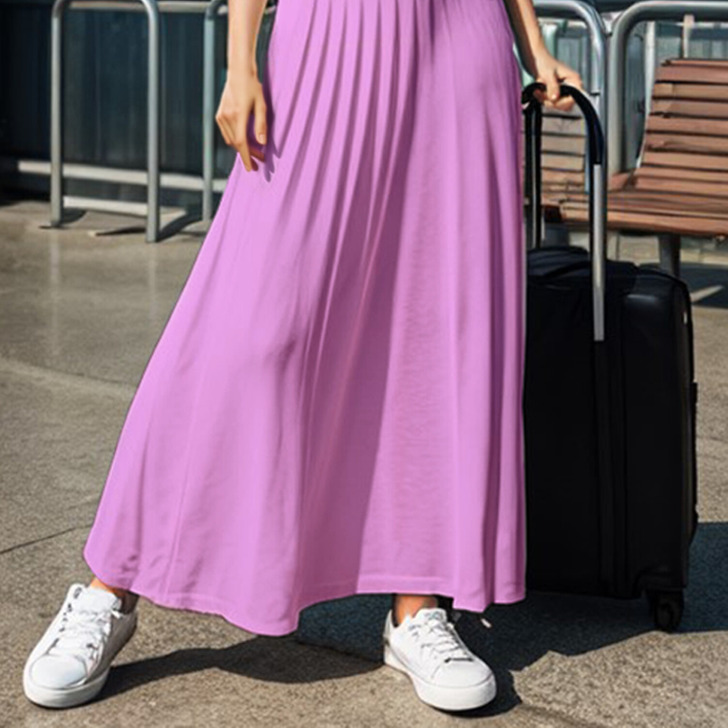
Long, flowing skirts are better suited for a beach stroll or a dinner outing than for travel. While they may feel comfortable, they can cause numerous inconveniences on a flight or bus ride. The loose fabric often gets caught in seats or tangled around armrests, making it easy to tear the skirt or even trip over it. A more practical choice is a skirt that allows free movement but stays close enough to your body to avoid snagging or getting stuck during your journey.
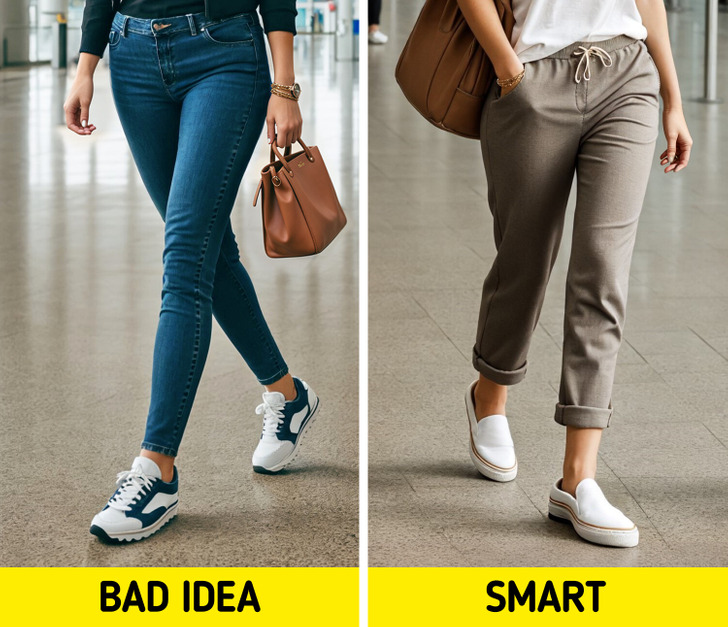
Sneakers might initially seem like a perfect choice for travel due to their comfort, but there’s one important drawback.
At airport security, you’ll need to remove your sneakers, and the process of untying and retying the laces can slow you down. Additionally, if you want to take them off during the trip to relax, putting them back on quickly can be a hassle because of the laces. A more practical option is to go for comfortable slip-ons with flat soles, which offer ease and convenience without compromising on comfort
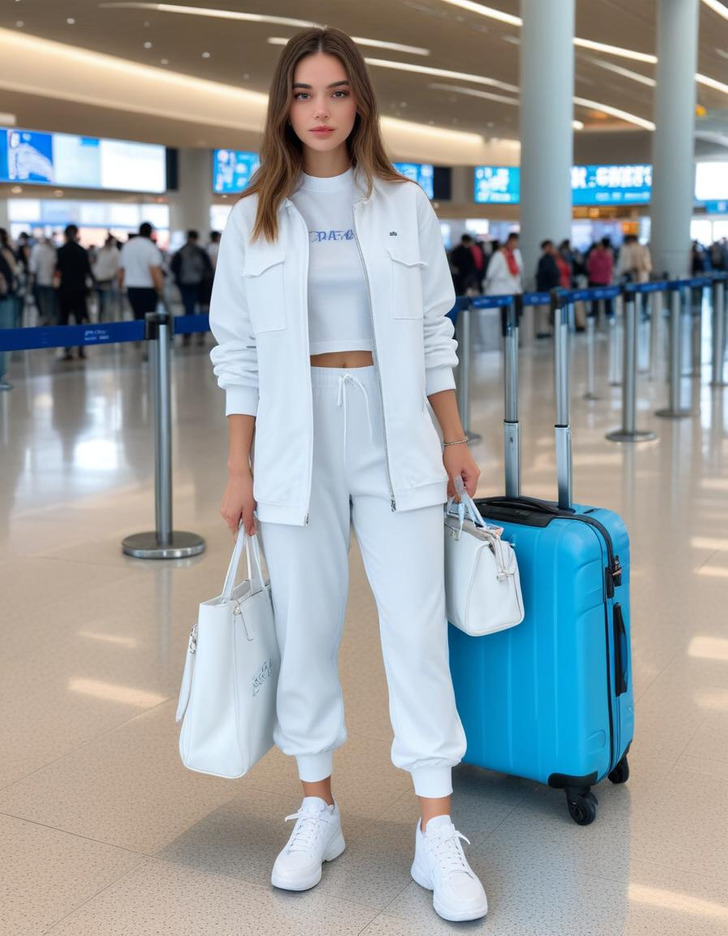
While crisp and clean-looking, all-white ensembles are highly impractical for travel. They’re magnets for stains from unexpected spills, dust from exploration, or even the grime of public transportation. Keeping white clothing pristine during travel activities is nearly impossible, and visible stains can make you feel self-conscious or unpresentable. Opt for darker colors or patterns that can better hide inevitable travel wear and tear, allowing you to focus on your experiences rather than worrying about your appearance.
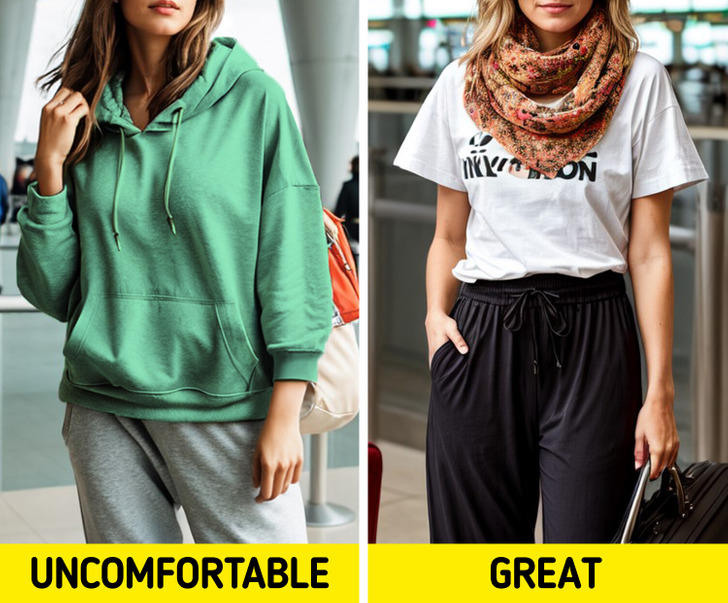
This type of clothing may seem comfortable and perfect for travel, but it comes with a few downsides. First, it may attract unnecessary attention from security personnel. Second, if the cabin or carriage gets too warm and you need to remove it, it can take up a lot of space in your bag. Additionally, navigating between rows of seats in this outfit can be quite challenging.
A better option is to wear a T-shirt or a lightweight jumper made from breathable fabric. You can also pack a scarf or a vest in your hand luggage to stay warm if needed without sacrificing comfort or convenience.
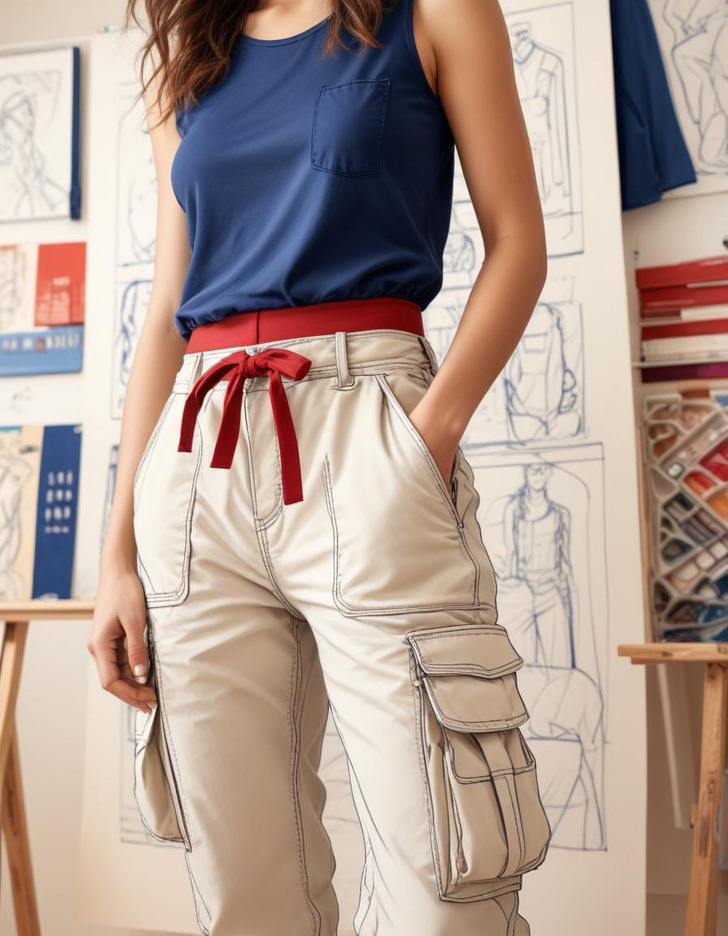
Experts advise against wearing loose cargo pants on flights. The numerous pockets can interfere with metal detectors at the airport, often resulting in additional screenings for passengers, which can be time-consuming. However, when traveling by train or bus, cargo pants can be an excellent choice. They are lightweight and comfortable, and their spacious pockets are perfect for stowing essentials like your phone, passport, cards, or cash, keeping everything conveniently within reach during your journey.
Palazzo trousers, which are currently in vogue, can be an excellent choice for travel due to their loose fit and freedom of movement. However, it’s important to avoid styles with overly long hems that drag on the ground. Otherwise, these pants will pick up dirt from the cabin floor, and you’ll find yourself needing to roll them up when using the restroom. Opt for palazzo trousers that are tailored to a suitable length to ensure comfort and cleanliness throughout your journey.

Materials like silk or linen, while luxurious, are high-maintenance choices for travel wear. These fabrics wrinkle easily, making you look unkempt after just a short time sitting in a vehicle or wearing a backpack. They’re also more challenging to care for on the road, often requiring special washing or ironing, which may not be readily available. Additionally, delicate fabrics are more prone to damage from rough surfaces or accidental spills. Opt for durable, wrinkle-resistant fabrics like polyester blends or treated cotton that can withstand the rigors of travel while still looking presentable.
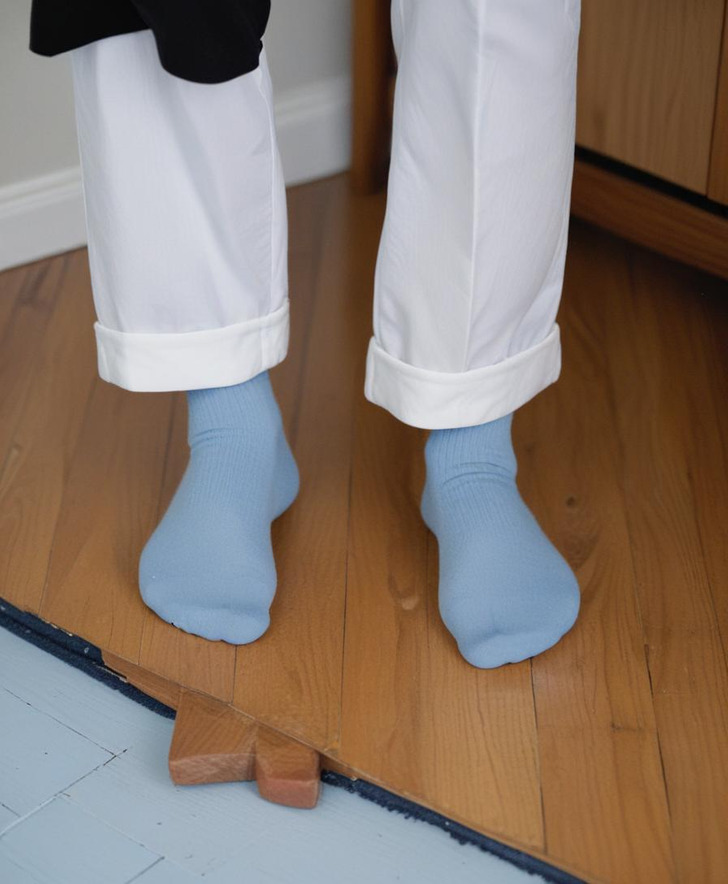
Cotton socks may not be the best option for summer travel, especially when you’ll be wearing the same shoes for extended periods. While cotton absorbs moisture effectively, it also retains it, leading to damp and sticky feet that can develop unpleasant odors.
A more suitable alternative is merino wool socks, known for their exceptional moisture-wicking properties and odor-blocking capabilities. For those who experience circulation issues, compression socks are a smart choice for long flights or bus rides. They provide support and comfort throughout your journey, and it’s advisable to keep them on for a couple of hours after arrival to maintain circulation.
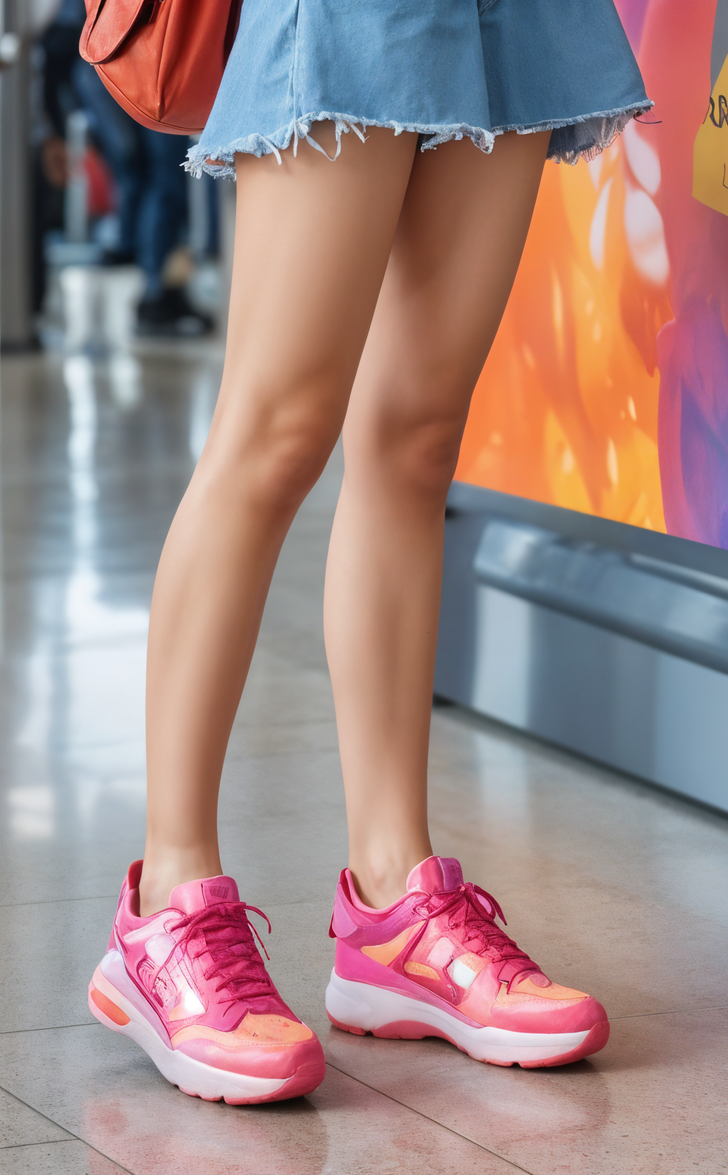
While it’s tempting to hit the road with a fresh pair of shoes, wearing brand new footwear on your travels is a recipe for discomfort. New shoes haven’t been broken in, which means they’re more likely to cause blisters, chafing, or general foot pain — especially problematic when you’re walking more than usual. This discomfort can significantly impact your ability to enjoy your trip, limiting your mobility and potentially causing lasting foot issues. Before your journey, take the time to break in any new shoes you plan to bring. Wear them for short periods in the weeks leading up to your trip, gradually increasing the duration to ensure they’re comfortable for long days of exploration.
Now that you’re dressed for success, it’s time to make the most of your stay. Want to know how to turn a basic hotel room into a luxury suite? Check out our next article.







